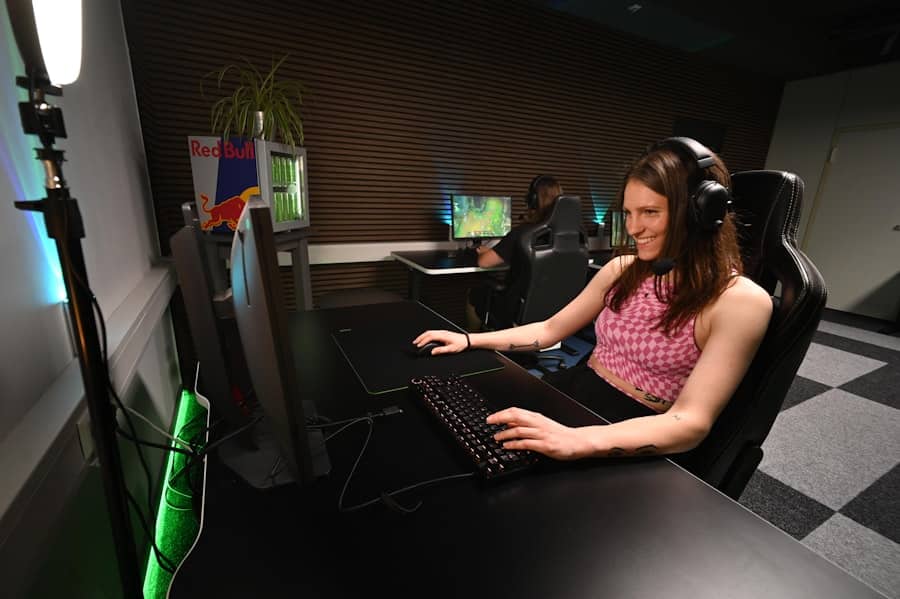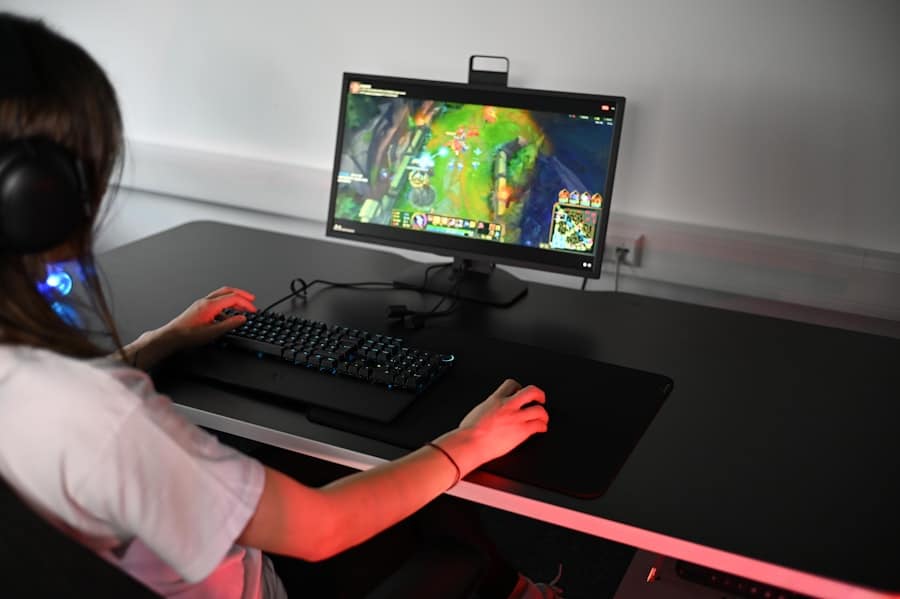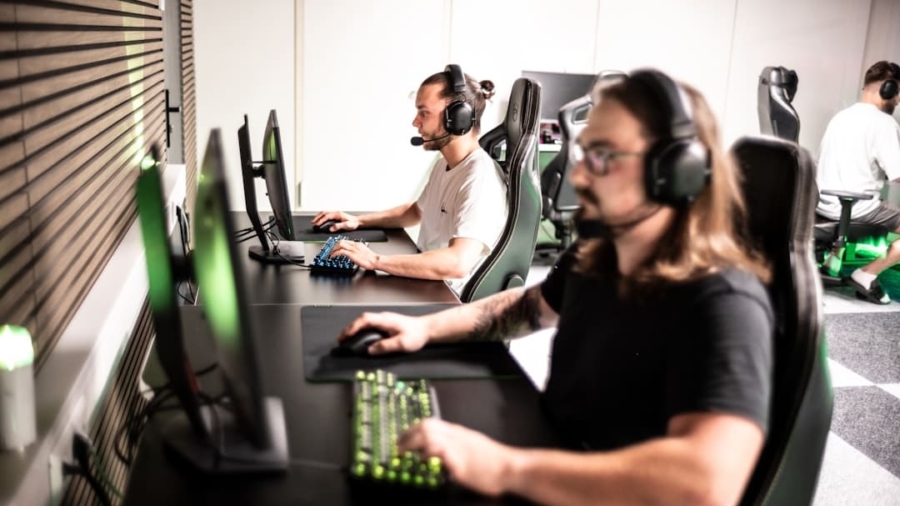The concept of the Metaverse has evolved from a niche idea in science fiction to a burgeoning reality that is reshaping how we interact with digital environments. Initially popularized by works such as Neal Stephenson’s “Snow Crash” and later by films like “Ready Player One,” the Metaverse is envisioned as a collective virtual space where users can interact with a computer-generated environment and other users in real-time. This immersive digital universe encompasses various technologies, including virtual reality (VR), augmented reality (AR), and blockchain, creating a seamless blend of physical and digital experiences.
As the Metaverse continues to develop, it promises to revolutionize not only entertainment but also social interactions, commerce, and even education. At its core, the Metaverse is about connectivity and community. It offers a platform where individuals can transcend geographical boundaries, allowing for unprecedented levels of interaction and collaboration.
Users can create avatars, participate in virtual economies, and engage in social activities that mirror real-world interactions. The rise of the Metaverse is not merely a technological advancement; it represents a cultural shift towards more immersive and interactive forms of communication. As we delve deeper into this digital frontier, understanding the role of gaming communities within the Metaverse becomes essential, as they are often the driving force behind its growth and evolution.
Key Takeaways
- The Metaverse is a virtual reality space where users can interact with a computer-generated environment and other users.
- Gaming communities have evolved from small groups of enthusiasts to large, diverse, and inclusive communities.
- Gaming communities play a crucial role in shaping the Metaverse by creating and sustaining virtual worlds and economies.
- Diversity and inclusivity are important factors in building strong and sustainable gaming communities in the Metaverse.
- The impact of gaming communities on the Metaverse economy is significant, as they drive virtual goods and services transactions.
The Evolution of Gaming Communities
Gaming communities have undergone significant transformations since the early days of video gaming. In the 1970s and 1980s, gaming was primarily a solitary activity or limited to local multiplayer experiences, often confined to living rooms or arcades. However, with the advent of the internet in the 1990s, gaming communities began to flourish online.
Early multiplayer games like “Doom” and “Quake” allowed players to connect over local area networks (LANs) and later through the internet, fostering a sense of camaraderie among players who shared similar interests. These early online interactions laid the groundwork for more complex social structures within gaming. As technology advanced, so did the nature of gaming communities.
The introduction of massively multiplayer online games (MMOs) such as “World of Warcraft” in the early 2000s marked a pivotal moment in community evolution. These games created expansive virtual worlds where thousands of players could interact simultaneously, forming guilds, alliances, and friendships that transcended traditional gaming experiences. Players began to invest not only time but also emotional energy into their virtual identities and communities.
This shift highlighted the importance of social interaction in gaming, leading to the emergence of forums, fan sites, and social media groups dedicated to specific games or genres. The evolution of gaming communities has been characterized by an increasing emphasis on collaboration, competition, and shared experiences.
The Role of Gaming Communities in the Metaverse

In the context of the Metaverse, gaming communities play a crucial role in shaping user experiences and driving engagement. These communities serve as social hubs where players can gather, share knowledge, and collaborate on various activities within virtual environments. Unlike traditional gaming experiences that often prioritize individual achievement, the Metaverse encourages collective participation and interaction.
Players can join forces to complete quests, build virtual structures, or even create their own games within existing platforms. This collaborative spirit fosters a sense of belonging and identity among community members. Moreover, gaming communities are instrumental in content creation within the Metaverse.
Many platforms allow users to design their own assets, environments, and experiences, which can then be shared with others. This user-generated content not only enriches the Metaverse but also empowers players to take an active role in shaping their digital worlds. For instance, platforms like Roblox and Fortnite have seen users create entire games or experiences that gain popularity within their communities.
This democratization of content creation encourages creativity and innovation while reinforcing community bonds as players celebrate each other’s contributions.
Diversity and Inclusivity in Gaming Communities
As gaming communities continue to expand within the Metaverse, issues of diversity and inclusivity have come to the forefront. Historically, gaming has been criticized for its lack of representation across various demographics, including gender, race, and sexual orientation. However, the Metaverse presents an opportunity to address these disparities by fostering environments that celebrate diversity and promote inclusivity.
Many developers are now prioritizing diverse character representations and narratives that resonate with a broader audience. In addition to character representation, inclusivity extends to community dynamics as well. Many gaming platforms are actively working to create safe spaces for marginalized groups by implementing strict anti-harassment policies and promoting positive interactions among users.
By embracing diversity within gaming communities, the Metaverse can become a more vibrant and dynamic space that reflects the richness of human experience.
Building and Sustaining Gaming Communities in the Metaverse
Creating thriving gaming communities within the Metaverse requires intentional efforts from both developers and players. Developers must design platforms that facilitate social interaction and provide tools for community building. Features such as customizable avatars, chat systems, and collaborative gameplay mechanics are essential for fostering connections among users.
Additionally, developers should prioritize user feedback to ensure that community needs are met and that players feel heard. Sustaining these communities over time is equally important. Regular events, updates, and community challenges can keep players engaged and invested in their virtual environments.
For example, seasonal events or themed challenges can encourage participation while providing opportunities for players to showcase their skills or creativity. Furthermore, recognizing and rewarding community contributions—whether through in-game rewards or public acknowledgment—can strengthen bonds among members and encourage continued involvement.
The Impact of Gaming Communities on the Metaverse Economy

The economic implications of gaming communities within the Metaverse are profound. As these communities grow, they contribute significantly to virtual economies through various means such as in-game purchases, trading of digital assets, and even real-world transactions facilitated by blockchain technology. Players often invest real money into virtual goods—ranging from cosmetic items to land ownership—creating a thriving marketplace driven by supply and demand dynamics.
Moreover, gaming communities can influence economic trends within the Metaverse by driving demand for specific types of content or experiences. For instance, if a particular game or genre gains popularity within a community, it can lead to increased investment from developers seeking to capitalize on that interest. Additionally, successful community-driven projects can attract sponsorships or partnerships with brands looking to engage with gamers in innovative ways.
This symbiotic relationship between gaming communities and the Metaverse economy highlights how social dynamics can shape economic landscapes in digital spaces.
Challenges and Opportunities for Gaming Communities in the Metaverse
While the potential for growth within gaming communities in the Metaverse is immense, several challenges must be addressed to ensure their sustainability and success. One significant challenge is managing toxicity and harassment within these communities. As diverse groups come together in virtual spaces, conflicts may arise due to differing opinions or behaviors.
Developers must implement robust moderation tools and community guidelines to foster respectful interactions while empowering users to report inappropriate behavior. Another challenge lies in ensuring equitable access to technology necessary for participation in the Metaverse. Not all players have access to high-end devices or stable internet connections required for immersive experiences.
This digital divide can create barriers that exclude certain demographics from fully engaging with gaming communities. Addressing these disparities through initiatives aimed at increasing accessibility will be crucial for fostering inclusive environments. Conversely, opportunities abound for innovative community-building strategies within the Metaverse.
The rise of decentralized platforms powered by blockchain technology allows for greater ownership of digital assets among users. This shift empowers players to create unique experiences while retaining control over their contributions. Additionally, collaborations between gaming communities and educational institutions can lead to skill development programs that equip players with valuable knowledge applicable both within and beyond gaming contexts.
The Future of Gaming Communities in the Metaverse
Looking ahead, the future of gaming communities in the Metaverse appears promising yet complex. As technology continues to advance—encompassing developments in VR/AR hardware, artificial intelligence (AI), and blockchain—the potential for richer interactions will expand exponentially. Future gaming communities may leverage AI-driven tools that enhance user experiences by personalizing content recommendations or facilitating more meaningful connections among players based on shared interests.
Furthermore, as societal attitudes towards gaming evolve, we may witness an increased acceptance of gaming as a legitimate form of social interaction and cultural expression. This shift could lead to greater investment from both public and private sectors into developing inclusive platforms that prioritize community engagement over profit maximization. Ultimately, while challenges remain on this journey towards an interconnected digital future shaped by vibrant gaming communities within the Metaverse—opportunities abound for innovation collaboration that will redefine how we connect with one another across virtual landscapes.
In the ever-evolving landscape of digital interaction, gaming communities in the metaverse are becoming increasingly significant. These virtual spaces offer immersive experiences that blend social networking with gaming, creating unique opportunities for connection and collaboration. A related article that delves into the tools that can enhance your understanding of digital trends is the RankAtom Review: The Game-Changing Keyword Research Tool. This article explores how advanced keyword research tools can provide insights into the digital behaviors and preferences of users, which is crucial for anyone looking to engage with or market to communities within the metaverse.
FAQs
What is the Metaverse?
The Metaverse is a collective virtual shared space, created by the convergence of virtually enhanced physical reality and physically persistent virtual reality. It is a concept that has gained popularity in the gaming and tech industries.
What are gaming communities in the Metaverse?
Gaming communities in the Metaverse are groups of gamers who come together in virtual spaces to interact, play games, and socialize. These communities can be formed around specific games, genres, or interests.
How do gaming communities in the Metaverse interact?
Gaming communities in the Metaverse interact through virtual avatars, chat systems, voice communication, and in-game activities. They can also organize events, tournaments, and other social gatherings within the virtual space.
What are the benefits of being part of a gaming community in the Metaverse?
Being part of a gaming community in the Metaverse can provide a sense of belonging, opportunities for collaboration and teamwork, access to exclusive in-game content, and a platform for socializing with like-minded individuals.
How can one join a gaming community in the Metaverse?
To join a gaming community in the Metaverse, individuals can typically search for specific communities within the virtual space, join online forums and social media groups, or participate in in-game events and activities to connect with other players.

